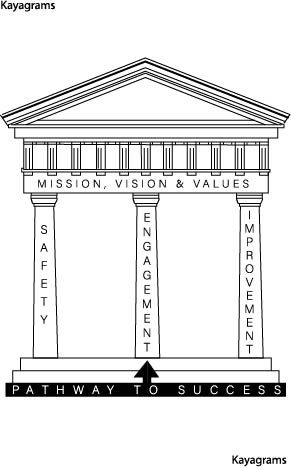The three pillars of leadership consist of safety, engagement, and continuous improvement. Success as a New Leader is dependent on the strength of each of these pillars. However, safety is the first pillar that New Leaders must establish.

Workplace safety is top-of-mind in many industries, but many leaders may feel disconnected from its importance. Some leaders will succumb to the pressures to cut corners in favor of profits. Ultimately, they will find that people will perform poorly if they are concerned about their safety; likewise, if they feel their bosses don’t care enough to implement safety measures and do what’s right, they will put in the absolute minimum effort possible.
Taking measures to ensure physical safety will result in a better work environment and increased revenues. Seemingly simple things like proper task lighting, thoughtful furniture placement, ergonomics, and evacuation procedures will put people at ease and let them focus on their work. If you’ve ever tripped over an extension cord at work… or had to maneuver awkwardly around a file cabinet… or had to reach too high to retrieve something heavy or cumbersome… you know that at the very least, this distracted you from your work and worst case, caused injury.
Safety isn’t just physical, it’s emotional. People are less likely to approach their boss with a concern or grievance if they feel they will be blamed or even fired. This doesn’t mean you have to babysit people or feel like you’re walking on eggshells lest someone’s feelings get hurt. You just have to make sure that people can freely approach you with any concerns, grievances, or even ideas without fear of retribution or fear of being dismissed or ignored.
As a New Leader its important that you ensure that:
- People are aware of workplace risks and hazards
- People are empowered to raise concerns about risks
- People have the resources to mitigate risks
- People feel safe to bring their concerns to leadership without fear of retribution
- People know you will take action on issues that put the physical and or the emotional safety of the team at risk
In short, if you care, your team will care!


